Red Persia. Part of 2. Defeat of the Republic of Gilyan
Creating a communist party. Left vs Tumb Khan
Almost immediately after the proclamation of the Gilan Soviet Republic, the Iranian Communist Party (Hezbe Communist Iran) was created in Resht. Its appearance was the result of the renaming of the Social Democratic Party Adalat, which operated in Iranian Azerbaijan. The Communist Party of Iran came out with radical positions, proclaiming its goal to conduct an immediate socialist revolution in Persia, with the elimination of the Shah's monarchy and feudal land tenure. Almost immediately after creation, the party was accepted into the Communist International as its Iranian section. The Transcaucasian revolutionary Avetis Sultan-Zade (the real name is Mikaelyan, 1888-1938), who in 1920-1923 played a major role in the creation of the Iranian Communist Party. and represented Iran in the Comintern. Since 1912, the Sultan-Zade actively participated in the activities of the RSDLP in Transcaucasia, in 1919 was sent to the Council of International Propaganda in the East. Arriving in Iran, he was actively involved in the political activities of the Gilani Soviet Republic and headed the left wing of the Communist Party, which opposed cooperation with Kuchik Khan and for the immediate implementation of land reform - the transfer of feudal land to Gilan peasants.
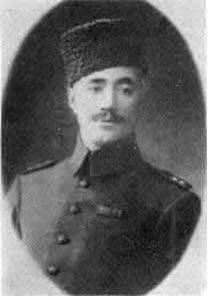 The party was headed by Azerbaijani politician Khaidar-khan Amu-Ogly Tariverdiev (1880-1921) - born in Urmia, who studied at the Tiflis Polytechnic University and participated in the activities of the RSDLP in Transcaucasia since 1898 (that is, it was the revolutionary of the “old school” even by the standards of Russia during the Civil War). After moving to Iran, in 1905, Mr. Haydar Khan (pictured) founded the first Social Democratic circle here, and during the Constitutional Revolution, in 1908-1909. served as governor of Hoy. Later, Haydar Khan took the post of commissar of foreign relations of the Gilan Soviet Republic.
The party was headed by Azerbaijani politician Khaidar-khan Amu-Ogly Tariverdiev (1880-1921) - born in Urmia, who studied at the Tiflis Polytechnic University and participated in the activities of the RSDLP in Transcaucasia since 1898 (that is, it was the revolutionary of the “old school” even by the standards of Russia during the Civil War). After moving to Iran, in 1905, Mr. Haydar Khan (pictured) founded the first Social Democratic circle here, and during the Constitutional Revolution, in 1908-1909. served as governor of Hoy. Later, Haydar Khan took the post of commissar of foreign relations of the Gilan Soviet Republic. In the first months of their presence in Gilan, Iranian communists made a significant amount of mistakes, setting Kuchik Khan against himself, who was already very cool about the idea of spreading communist ideas in Gilan and Persian lands. First of all, Kuchik Khan's discontent was caused by calls from radical-minded Communists for the immediate expropriation of property from the "rich", that is, the merchants. The Khan handful contained their Jengelian detachments for money, which the Gilyan merchants willingly donated — patriots who opposed British dominance in Iran, which impeded the development of local business. However, the overly radical slogans of the communists could frighten the merchants from the Khits and the support of the Gilan revolution. Moreover, the Communists "went far" in questions of women's emancipation, which for Eastern countries have always been particularly delicate. The requirements of emancipation could also frighten and turn away from the support of the revolution even more numerous sections of the population, especially the villagers, distinguished by their conservative views. In turn, the Communists blamed Kuchek Khan for moderation, and even Sergo Ordzhonikidze reported to the center that in reality there was no talk of real Soviet rule in Gilan, since Kuchek Khan was seeking only deliverance from British rule. Bolsheviks sees the source of funds and voluntary military assistants.
Politics Khan's Tunic did not suit the Iranian and Soviet communists, since Kuchek Khan did not seek to carry out radical social transformations in the Republic of Guilan, but was focused only on preserving independence from Tehran and preserving the power of local feudal elites. In the end, it was decided to replace Tumb Khan. Anastas Mikoyan played an important role in his overthrow, serving as adviser in Gilan. Already 9 in July 1920, Mr. Kuchek Khan was forced to leave the government of the republic, since he sabotaged plans for the agrarian reform in Gilan. The former Gilani prime minister again went to his usual “jengel” (forest), and Ehsanullah Khan, the leader of the left Djegelis, who headed the Revolutionary Committee of Iran, became the head of the republic. However, there was little confusion from the new leader. The Russian Bolsheviks themselves, who brought Ehsanullah to power, characterized him only as a degenerate and a drug addict. The plenipotentiary of Soviet Russia Shota Eliava reported to the center: “Ehsanullah, apparently, is a degenerate, opioman, neurasthenic. He is smaller than Kuchik, who himself is by no means any solid figure, able to unite around him the acting revolutionary elements. ” The Soviet leadership in Moscow began to ponder how to get out of the Iranian regime with minimal losses. stories. According to Shota Eliava, there were only two ways out - either voluntarily withdraw from Gilan, giving further development to the drift, or continue the revolutionary attack on Tehran in order to carry out a revolution in all of Persia. However, the last task faced, firstly, the lack of normal Persian personnel capable of carrying out this revolution (almost all communist leaders were Azeris), and secondly - with indifference and lack of support from the local population, who did not understand the meaning of socialist revolution and ongoing transformations. Only the urban strata — the few intelligentsia, the bourgeoisie and the proletariat — were more or less aware of the situation, while the large rural population remained under the full influence of the feudal lords.
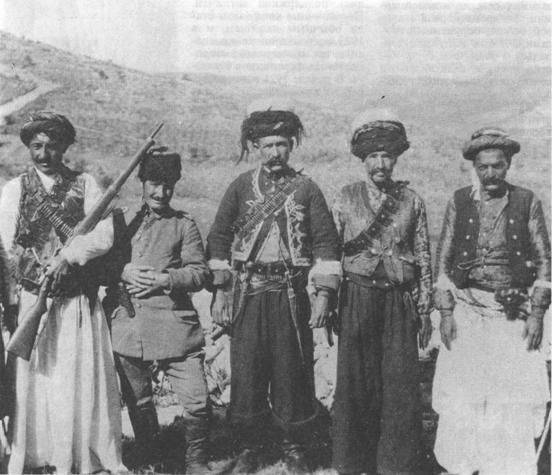
Finally, a gradual normalization of relations between Soviet Russia and Great Britain began. The Soviet representatives held talks in London, and the British side insisted on stopping the subversive activities of Soviet Russia in Turkey, Persia, Afghanistan and India. However, the Soviet leadership, tired of the economic blockade by the UK and its allies, hinted London on the possibility of a mutually beneficial exchange - the UK refuses sanctions, and Soviet Russia becomes "a mediator between England and the Persian revolution" (these words by Karl Radek, published in the Izvestia newspaper directly hinted at the possibility of the Soviet leadership giving up revolutionary Gilan and stopping revolutionary activities on the territory of the Persian state). The only supporters of the continuation of the revolutionary struggle in Persia remained the Transcaucasian, first of all, the Baku Bolsheviks. Sergo Ordzhonikidze remained the main “lobbyist” of the continuation of the revolution in Persia in the leadership of the Bolshevik Party. He requested from the Central Committee of the RCP (b) to send to Persia additional armed forces numbering one and a half thousand Red Army men. According to Ordzhonikidze, the presence of such a detachment would allow to capture Qazvin and even Tehran itself. Ordzhonikidze motivated his request by saying that the revolutionary movement in Persia is practically absent, if not to consider as such the anti-British actions of the local population dissatisfied with the domination of foreigners. Therefore, a genuine revolution in Persia is possible only with the active assistance of Soviet Russia. However, the Central Committee of the RCP (B) refused the request of Sergo Ordzhonikidze. Moreover, Leon Trotsky unequivocally determined the priorities of the Soviet power - the main task is to defeat Wrangel, therefore there can be no talk of transferring Red Army units from the Caucasus to Persia.
- Persian Cossack Brigade Officers
Counter-offensive of the shah's troops. Victory Persian Cossack Division
While the Soviet leaders were deciding how to deal with the Persian Red Army and whether to continue the “Gilan adventure”, the Shah's troops launched a counteroffensive. Qazvin's Persian Red Army suffered a serious defeat. The reasons for the defeat were quite objective. First, the "Persian" part of the Red Army consisted of yesterday's partisans, practically - semi-robbers, not capable of serious battles outside their native forests. Secondly, the Gilians were opposed by the most combat-ready units of the Shah's army, first of all the Persian Cossack Division. The origins of its creation were Russian military advisers who, back in 1879, created the Persian Cossack Brigade, modeled on the Terek Cossack Army, in 1916, due to the aggravation of the international situation, transformed into the Persian Cossack Division. The division carried out tasks for the personal protection of the Shah and the top leaders of the Persian government, foreign embassies and representative offices, arsenals, banks, the suppression of popular demonstrations and the collection of taxes from the population. In 1916, special divisions were formed within the division to combat the rebel movement, stationed in Ardebil, Astrabad, Gilan, Zanjan, Isfahan, Qazvin, Karmanshah, Kurdistan, Luristan, Mazendaran, Meshkhed, Rashte, Teree, and Tehree, too. and Khorasan. During the forty years of its existence, the brigade / division retained its unchanged structure. The commander remained a Russian officer, the brigade / division included artillery, and then infantry units. The staff was originally recruited from among the "Muhajirs" who moved to Persia after the Russian conquest of the Caucasus. After increasing the number of compounds, it began to be assembled, first of all, by Kurds, known for their militancy, by Turkmen and representatives of other nomadic peoples of Iran. The regiments of the division were commanded by Persian generals, but in fact the commanders of the regiments were Russian officers and instructors. During the events in question, the Persian Cossack division was commanded by a Russian emigrant, Colonel Vsevolod Dmitrievich Staroselsky (1875-1953) - a former commander of the Horse Guards regiment who emigrated to Persia after the revolution. Staroselsky also subordinated experienced Russian officers who served in the Persian Cossack Division as military advisers, and in fact commanded separate subunits.
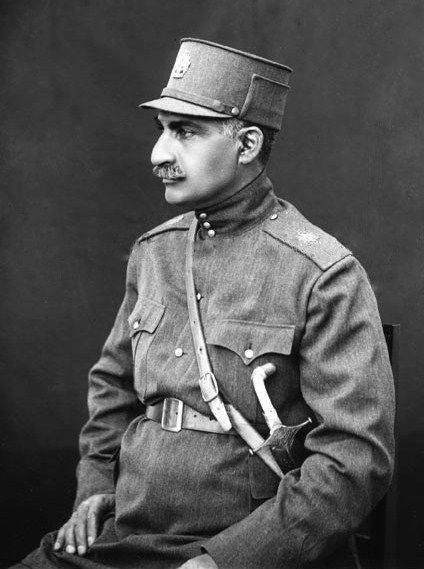 General Reza Pahlavi (1878-1944) played a major role in the defeat of the Guilan units of the Red Army near Qazvin, who actually led the country's armed forces in place of the young Sultan Ahmad Shah Qajar. Reza Pahlavi (pictured), half Masendaran (after his father), half Azerbaijani (by mother) by nationality, began serving as a rank and file in the Persian Cossack Brigade and for several decades reached the rank of general. It was a professional military man, besides not deprived of political ambitions. 22 August 1920 fell under the blows of the Shah's troops Resht - the capital of Gilan. The territory of the province was blocked by Shah's troops, and many civilians fled into the woods. The plenipotentiary of Soviet Russia, Shota Eliava, telegraphing Lenin and Trotsky in September 1920, reported on the need for considerable military and financial assistance to the Gilyan Republic, otherwise the fate of the latter could have been deplorable. Disputes began in the leadership of the Central Committee of the RCP (B.). So, Lev Karakhan, who served as Deputy Commissar for Foreign Affairs, believed that it was necessary to continue the revolution in Persia, since this would show the might of Soviet Russia to Great Britain and other countries. In the end, additional units of the Red Army were transferred from Baku to Enzeli. General Kargaleteli, who held the post of commander of the Gilan army, was replaced by a more worthy figure, according to Ordzhonikidze, the figure of Nikolai Gikalo (1897-1938). Despite his young (23) years, Nikolai Gikalo was an experienced military and revolutionary. He graduated from a military feldsher school in Tiflis and participated in the First World War, received the Cross of St. George, and from 1918 he was in the party political work in the Caucasus, including having managed to command the actions of the Terek rebels.
General Reza Pahlavi (1878-1944) played a major role in the defeat of the Guilan units of the Red Army near Qazvin, who actually led the country's armed forces in place of the young Sultan Ahmad Shah Qajar. Reza Pahlavi (pictured), half Masendaran (after his father), half Azerbaijani (by mother) by nationality, began serving as a rank and file in the Persian Cossack Brigade and for several decades reached the rank of general. It was a professional military man, besides not deprived of political ambitions. 22 August 1920 fell under the blows of the Shah's troops Resht - the capital of Gilan. The territory of the province was blocked by Shah's troops, and many civilians fled into the woods. The plenipotentiary of Soviet Russia, Shota Eliava, telegraphing Lenin and Trotsky in September 1920, reported on the need for considerable military and financial assistance to the Gilyan Republic, otherwise the fate of the latter could have been deplorable. Disputes began in the leadership of the Central Committee of the RCP (B.). So, Lev Karakhan, who served as Deputy Commissar for Foreign Affairs, believed that it was necessary to continue the revolution in Persia, since this would show the might of Soviet Russia to Great Britain and other countries. In the end, additional units of the Red Army were transferred from Baku to Enzeli. General Kargaleteli, who held the post of commander of the Gilan army, was replaced by a more worthy figure, according to Ordzhonikidze, the figure of Nikolai Gikalo (1897-1938). Despite his young (23) years, Nikolai Gikalo was an experienced military and revolutionary. He graduated from a military feldsher school in Tiflis and participated in the First World War, received the Cross of St. George, and from 1918 he was in the party political work in the Caucasus, including having managed to command the actions of the Terek rebels. The end of the republic. Coup and Death of Khan
Failures in Gilan increasingly strengthened the Soviet leadership in the opinion that it was necessary to stop supporting the Persian revolution. Moreover, 26 in February 1921 in Moscow was signed by the Soviet-Persian agreement on the withdrawal of the Red Army from the territory of Persia. But the leadership of Azerbaijani communists, including Nariman Narimanov (1970-1925) - Chairman of the Council of People's Commissars of the Azerbaijan SSR, insisted on further participation in the Gilan events. In May, 1921 was revived again in the Gilan Soviet Republic. First, an agreement was reached between the rebel leaders - Mirza Kuchek-Khan, Ehsanullah Khan, Kurdish leader Khal Kurban and the head of the Iranian Communist Party, Haidar Tariverdiev. Tumble Khan again headed the government of the Republic of Gilyana, which 5 of June 1921 was renamed the Persian Soviet Socialist Republic, with an obvious claim to gradually cover the entire territory of Persia. The Persian Red Army launched an offensive and captured Shahsear, Abbasabad and Nishterud. However, then, after a serious defeat near Tuvir, a new retreat of the Persian Red Army began. Moreover, Saad-od-Doule, who commanded the strike rifle brigade, went over to the side of the shah. In fact, the end of the Gilan Soviet Republic began, which lasted until the fall of 1921. Despite the proposals of Baku to evacuate the Red Army Persian units to Soviet Azerbaijan, the authorities of the Gilan Soviet Republic were determined to continue fighting against Shah's Iran. However, internal contradictions within the Gilan leadership also increased. Tumble Khan did not like the strengthening of the communists supported by Moscow, all the more so that by the summer of 1921, Moscow had in fact ceased to provide substantial support to Tumble Khan himself.
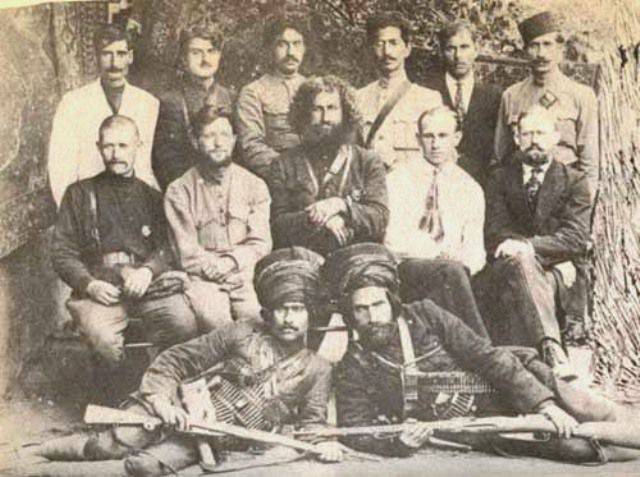
In the end, Kuchek Khan, who had finally distanced himself from the Communists, decided to carry out a coup that occurred on August 4 on 1921 and aimed at overthrowing Ehsanullah Khan and the actual leaders of the Gilan government - the communist leaders. After the coup, pushing the communists back from power, he organized on September 29 1921 an attack on the headquarters of the Iranian Communist Party in Rasht. As a result of the actions of Kuchik Khan’s supporters, the leader of the Communist Party, Haidar Khan Tariverdiyev, was killed. Tumbler Khan hoped that the suppression of the Communists would allow him not only to preserve personal power, but also to normalize relations with Tehran, as the Shah's troops advanced closer to Resht. However, Reza Pahlavi did not enter into negotiations with Kuchek Khan. The leader of the jangelis fled to the Talysh Mountains, where he had been hiding for some time, having received severe frostbite on his limbs. At this time, he was betrayed by his former supporters. Kurdish leader Khalu Kurban decapitated Kuchek Khan and sent the severed head of the former chairman of the Revolutionary Military Council of the Gilan Soviet Republic to Rasht. There, in the capital of Gilan, the head of Kuchek Khan was put on display near the military barracks. Khalu Kurban himself, who betrayed Kuchik Khan, received a reward from Reza Pahlavi - epaulets of the general of the Persian army. Finally, the Persian Soviet Socialist Republic ceased to exist 2 in November 1921, after which Gilan continued to exist as a province (ostan) within Iran.
Together with the Gilan Republic, although at different times, the leader of the Jangelians, Mirza Kuchek Khan and the creator of the Iranian Communist Party, Khaidar Khan Tariverdiev, were killed. Ehsanulla Khan managed to escape and get to Baku, where he calmly lived on the position of an honorary revolutionary - an emigrant until 1937, when he was repressed. Nariman Narimanov died in 1925 in Moscow from a heart attack, but many historians are convinced that the 55-year-old Azerbaijani communist could be eliminated. Under strange circumstances, Grigory "Sergo" Ordzhonikidze, who was only 18 years old, died on February 1937, 50. Fyodor Raskolnikov, who commanded the legendary Anzeli operation, left Gilyan in June 1920 and was appointed commander of the Baltic fleet, in 1921 he switched to diplomatic work. He represented the interests of the RSFSR and the USSR in Afghanistan, Estonia, Denmark, and Bulgaria. In 1938, Raskolnikov, having received a call from the USSR, was about to leave for the Union when he was hit by a newspaper informing him of the removal of the plenipotentiary. Anticipating a possible arrest and execution, Raskolnikov refused to return to the USSR, becoming one of the first Soviet “defectors” of this level. On August 17, 1939, he completed work on the Open Letter to Stalin, in which he accused the Soviet leader of organizing repression. And already on September 12, 1939, less than a month after the completion of the letter, Raskolnikov died under strange circumstances in Nice. Companion Raskolnikov in his Caspian epic Larisa Reisner (1895-1926) - the legendary woman commissar of the flotilla, in 1921 broke up with Raskolnikov and married Karl Radek. In 1926, she died in Moscow from typhoid fever at the age of only thirty years.
28 June 1922 died of severe fever and gangrene, thirty-six-year-old Viktor (Velimir) Khlebnikov died. Avetis Sultan-Zade, who returned to the Soviet Union, was repressed in 1938, like many other Transcaucasian Communists. Perhaps the longest-known participant in those events was Moisey Altman (1896-1986), a veteran of the establishment of Soviet power in Ukraine, who edited the newspaper Krasny Iran. Returning to Soviet Russia, he took up scientific activities, defended his doctoral dissertation at the Leningrad Pedagogical Institute in 1939, then taught at various universities in the country, and retired in 1959 while continuing to engage in scientific and literary activities. Moses Altman died in 1986, five years before the fall of Soviet power, which he was a witness and direct participant in establishing.
The fate of the Iranian Communist Party
As for the events in Iran, after the suppression of the uprising in Gilan, the Shah regime managed to establish control over virtually the entire territory of the country. However, the actual leadership of the country at that time was already exercised by the Minister of War, General Reza Pahlavi, who was appointed prime minister in 1923. Young Ahmad Shah Qajar did not play any real role in Persian politics. Moreover, Reza Pahlavi almost openly prepared the removal of the Shah and the entire Qajar dynasty from power. In 1923, the shah went to Europe - ostensibly for medical treatment. And on October 31. The 1925 of the Constituent Assembly of the Mejlis announced the overthrow of Ahmad Shah Qajar. 12 December 1925 was proclaimed by General Reza Pahlavi, who on 15 December 1925 took the oath of the ruler and gave rise to the last Shah's dynasty in Pahlavi history in Iran. It was Shah Reza Pahlavi who in 1935 officially changed the name of the country from Persia to Iran, although the latter name was used at an unofficial level before.
After the defeat of the Gilyan Republic, a serious blow was struck to the communist movement in Iran. Many prominent communists were killed during the Kuchik Khan coup, others were slaughtered by the Shah's troops during the “sweep” of the cities of Gilan, someone lucky enough to quickly leave the country. On the territory of Iranian Azerbaijan, before 1922, a detachment of communist fedians under the leadership of the famous poet Abulkasim Ahmedzade Lakhuti (1887-1957), a former member of the Sheikh Khiabani movement, and then a member of the Iranian Communist Party, tried to resist. Together with Lahuti, he acted at the head of his unit and Jafar Mamed Kavian (1895-1975) - a member of the squads of Sattar Khan, then a Baku tailor who participated in the Khiabani uprising. After the impossibility of carrying out an early communist revolution in Iran became apparent, Lakhuti, Kavian and many other Iranian communists moved to the Soviet Union. When the Pahlavi regime was established in 1925 in Iran, the activities of the Iranian communists virtually ceased. The party press was brought into the country from abroad, the majority of prominent communists also disappeared in the territory of the USSR. However, an illegal 1927 congress of the Iranian Communist Party was held in 2, at which the party adopted a new program and charter and decided to start the work of local illegal party organizations. The publication of the newspapers Peykar (The Struggle), Bayrage Engelab (The Banner of the Revolution) and the magazine Setarey Sorh (The Red Star) began in Germany and Austria. In 1929-1931 In Iran, the labor movement intensified, in which the Communists also played a very important role - they led strikes at the Isfahan textile factory, the Mashhad carpet workshops and the railway in Masendaran province. In May, 1931 Shah Reza Pahlavi was forced to legally ban the activities of the Iranian Communist Party in the country, as well as any communist propaganda. In 1934, doctor Tagi Ergani (1902-1940), who published the magazine Dona (Universe), became the new party leader. However, in 1937, repression against the Iranian communists became more active again. A number of prominent party activists were arrested and imprisoned. In 1938, the famous “Process of fifty-three” took place, in which 53 leading activists of the Iranian Communist Party appeared before an Iranian court. Among them was the party leader Tagi Ergani, who was killed in prison in 1940. In fact, at the turn of 1930's - 1940's. The communist movement in Iran, by the efforts of the Shah regime, was completely destroyed and for its revival in 1941 it took the creation of a new People’s Party of Iran (Tude), whose peak in the revolutionary confrontation of the Shah regime fell on the second half of the 20th century.
The existence of the Gilan Soviet Republic for more than a year was one of the most striking pages not only in the history of the Iranian revolutionary and communist movement, but also in the Soviet / Russian presence in the Middle East. The second attempt to create a pro-Soviet republic on the territory of Northern Iran relates already to the consequences of the Second World War and is associated with the desire of the Kurdish and Azerbaijani peoples to acquire their own statehood. We are talking about the creation of the Makhabad Republic and the Azerbaijan Democratic Republic. By the way, in the creation of the latter in 1945, some of the surviving members of the revolutionary movement in Gilan played an important role. Thus, Seyid Jafar Pishevari, who served as foreign affairs commissar of the Republic of Gilan, became First Secretary of the Central Committee of the Iranian Communist Party in 1929, survived a ten-year (from 1931 to 1941) imprisonment in the Shah's prison, and in November 1945 headed the Azerbaijan Democratic Republic. After the ADR ceased to exist, he died in a car accident in 1947. Jafar Kavian, who served as Major General of the post of Minister of Defense of the Azerbaijan Democratic Republic, after the cessation of the ADR, left for Baku, where he lived safely to 1975 and was buried with all due honors. As for the historical assessment of the events of almost a hundred years ago, today the Iranians are most positive about the figure of Mirza Kuchek Khan. At the official level, he is considered a national hero of the struggle of the peoples of Iran against foreign, primarily British and Russian, influence on the country's policy. A mausoleum in memory of Mirza Kuchek-Khan Dzhengeli was built at one of the city cemeteries of Rasht.
- P P 'SЊSЏ RџRѕR "RѕRЅSЃRєRёR№
- talashonline.net, konsul-777-999.livejournal.com
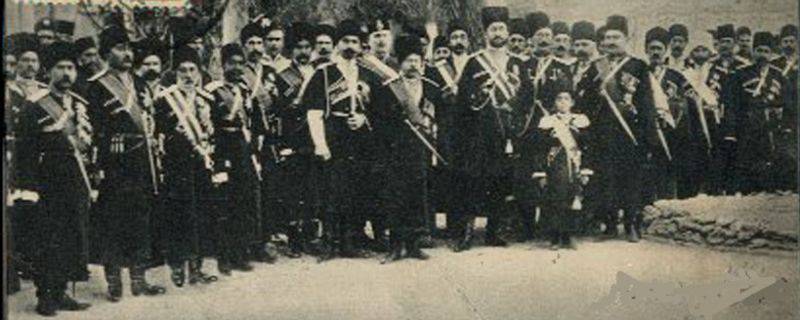
Information